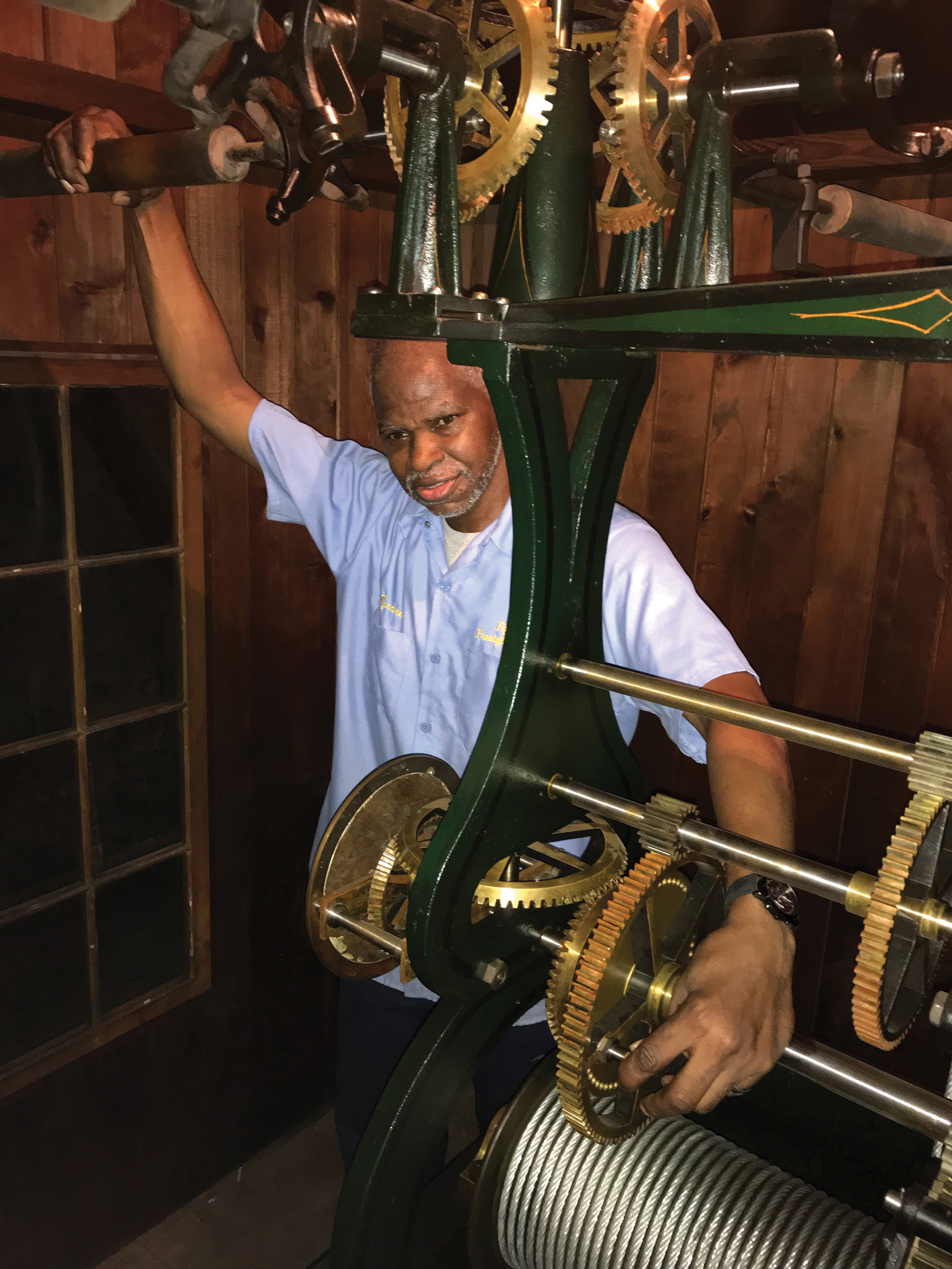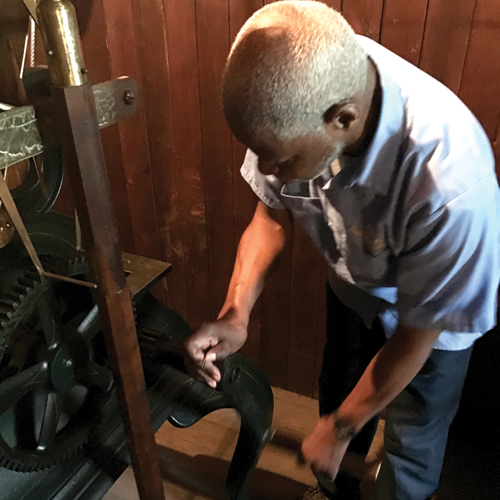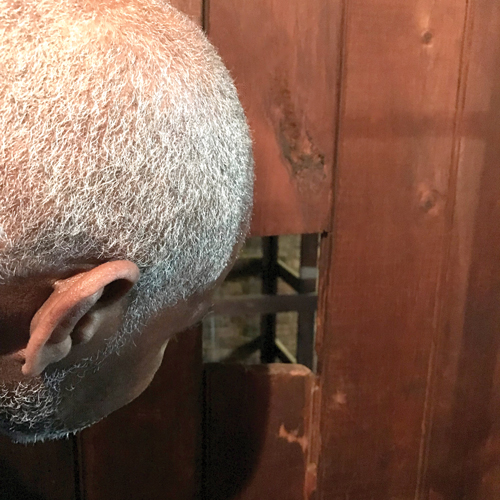General News · October 30, 2019
‘Falling Back’ in the Clock Tower
Tyrone Dillard, a member of the building staff for 14 years, is the man who winds the clock.



Twice a year—including this coming Sunday—he has an additional duty: moving the hands in the clock tower forward or back one hour, in accordance with Daylight Savings Time. Here’s how it’s done.
Weekly
Every Sunday Tyrone climbs into the clock tower to where the clockworks are housed. There, a 14-foot pendulum rocks in steady rhythm, each swing precisely counting two seconds from point A to point B.
The counterweight to the pendulum is a box of rocks, carefully weighted and suspended from a pulley. With each tick of the pendulum, the box descends to a lower chamber. This gravitational pull powers the massive drive shafts that turn the hands of the clocks you see outside.
The box takes seven days to make its descent. From inside a tiny woodshed where the clockworks are housed, Tyrone hoists the box back up to its starting point. A peephole cut into the side of the shed allows him to see when the box has risen to its starting point.
Twice a Year
When Daylight Savings Time rolls around, the adjustment is remarkably simple.
Tyrone doesn’t hang from the clock hands, Harold Lloyd-style, to change the hour. Instead, he pulls a release that’s tucked just behind the clock face inside the woodshed. Then he twists the drive shafts that connect to the clocks outside. With each twist, he watches the hands of inside clock move until he’s reset them one hour forward, or one hour back.
That’s it.
Daylight Savings Time ends on Sunday (Nov. 3), when we will “fall back” one hour. Long before you arrive at church that morning, our clock tower will show the correct time. You can thank Tyrone for that.
